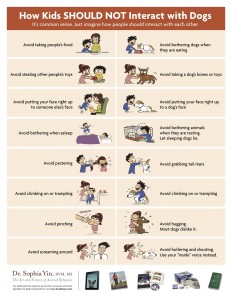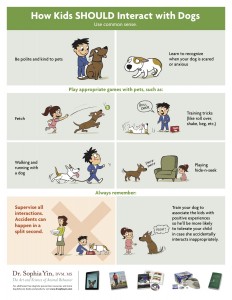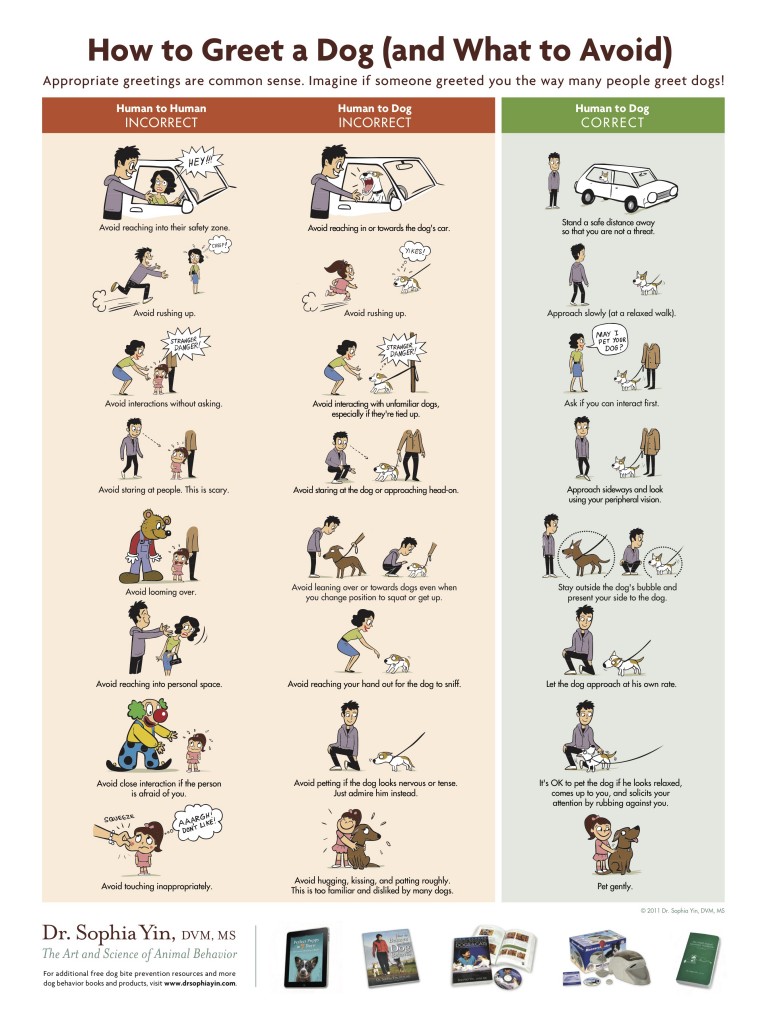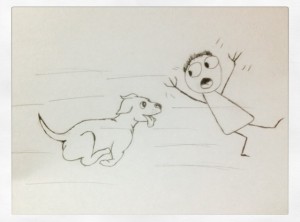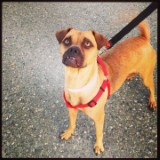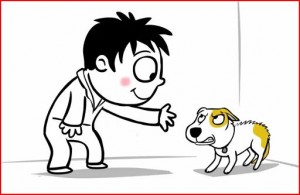Before and during the greeting or petting of a dog, it’s important to recognize what the dog’s signs and signals are in case of discomfort or anxiety. Now that you’ve taught your kids how to greet a dog, it’s time to dive into recognizing body language.
Some dogs may be ok with hugs and kisses. I have another dog other than Bruna, our Minpin Cassie, and she is a HUGE lover of being all up in my face and for me to be all up in hers. Bruna, on the other hand, will let you know if she wants you close enough to even just pet her on the head..or not… every dog is different!
There have been some pretty scary youtube videos out there showing kids “playing” with their dogs, where the dogs are showing very clearly that they are extremely uncomfortable. Some of the clips below might make your stomach sink, so I will warn you right off the bat that it is quite unnerving to watch the third video in particular. Please do watch all three if you can, it will show you just how important it is to become familiar with dog body language for yourself, but also for the children in your life. All three are great examples of dogs showing some stressed out body language that was being ignored or not noticed by the adults around them.
https://www.facebook.com/ThePawMan2013/videos/451584018360672/
Today we’re featuring a special poster that helps to really understand dog body language, and it’s super easy for kids to follow along with too 🙂
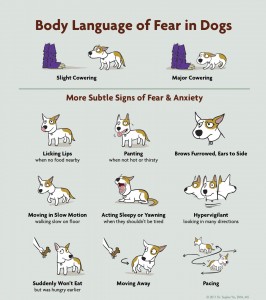
On Saturday May 28th, Mindful Mutts will be hosting a “How to Greet a Dog” workshop! Kids of all ages are welcome. We’ll be covering in depth everything from appropriate greetings, to do’s and don’t when petting, and of course, body language! The best part? Playful, friendly happy pups will be there to meet and practice on! Follow us on Facebook, instagram, and twitter or visit our website for more details which will be released Monday!
Thank you for letting me be part of the awesomeness that is Kids New West!
XO
